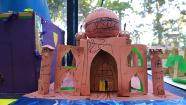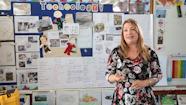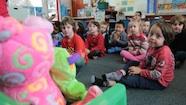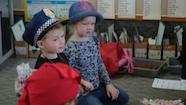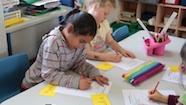Jude Black and Diana Comp describe their approach to planning at Green Bay Primary.
Planning for technology at primary
Find the indicators of progression referenced in the video.
Transcript
Jude Black: Well, we have adopted an overview for technology education over a three-year cycle. We tried a two-year cycle initially and realised that it just was too technology based, we weren’t doing justice to the other curriculum areas that we wanted to integrate with.
So the three-year cycle is working really well. So we have a major or a minor focus in the technology components, and then what we do is each year when we are doing our annual planning, we look at the context that we’ve chosen for our big themes across the year and then look at what are the best match for the technology components.
So we don’t stick to a rigid idea of the overview, we juggle it round across the year. So also with planning, we then take those technology components that we’ve identified, and we then look at how best to make the planning for technology fit within our inquiry learning programme. So it is an integrated approach most of the time. Occasionally, we might do a one-off narrow focus on some technology aspect, but generally we are integrating it.
Diana Comp: During term 4, we always get together to decide what we are going to, what topics we will undertake for the next year, and once that’s decided then we try to link in a new technology or social sciences, arts, into our topics and try to work out which stream would be suitable for each topic.
For instance, for World War One, we decided that CoT [Characteristics of Technology] was most appropriate. From there I will go away and I’ll look at the progression indicators and I will work out plans for each level. So I do the plans for level 1, 2, 3, and 4 and I find as many resources as I can to support those plans.
It’s really important then that each syndicate takes ownership of their plans. That they sit together with some support, go through each learning intention or each progression to work out what’s required. Quite a good way is, because the progressions are quite wordy, is to nut out what each word means with the teachers and then we can then go and talk to the children and get the children to brainstorm and pull apart the learning intention and work out what’s really required.
And so with the planning, I always encourage the teachers to have a wall, a technology wall, and put the technological literacy words up, because the children they will forget those words.
Every year you should start, go back to level 1 progressions and just make sure that the children can remember what the learning intentions or the learning was around those progressions. For instance, in CoT you know, do they really understand what the natural world, the made world and the social world are before you move onto level 2 and level 3. If they don’t have those foundation skills, then you can’t hook your learning, your next steps.
The indicators of progression are really important, you need to start at level 1 and look at the progressions and decide whether you think students have that understanding before you move on. It’s a flowchart, so you need to follow the arrows through the progressions, and it’s no use teaching level 4 if the students are still at level 1. So you just need to double check through conversations and your observations whether they have the understandings that they need before you move through the progressions.
Related videos
Planning for a coherent programme in primary (02:11)
Science and technology teacher Shannon Maloney shares how she works collaboratively with teachers to integrate technology into their programmes....
Building technology inquiries in years 1–6 (02:47)
Shannon Maloney talks about building rich technology units within a programme of inquiry in years 1–6.
My role as a lead teacher technology at Green Bay Primary (02:48)
Diana Comp shares about providing resourcing, inspiration, and professional learning in her role as lead teacher technology.
Hooking primary students into technology (02:34)
Diana Comp shares some of her strategies for engaging primary students and growing understandings in technology.
New entrants identify the made world (03:14)
New entrants explore what technology is with teacher Jill Harper.
Year 1–2 technologists design for a purpose (03:52)
Students in years 1 and 2 discuss with their teacher why technologists make things out of different materials.
Year 1–2 future technologists (02:06)
Kathy Chandler and her year 1–2 students discuss technological outcomes and what technologists do.


